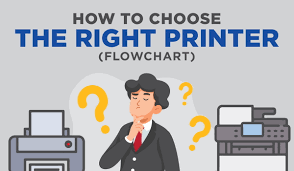How Chips Have Revolutionized the Cartridge Industry and the Role of OEMs in Driving Costs
The integration of chips into printer cartridges has
significantly transformed the industry, affecting both functionality and cost.
These small but powerful components enable printers to communicate directly
with cartridges, ensuring proper function and quality control. However, this
innovation has also paved the way for Original Equipment Manufacturers (OEMs)
to manipulate the market and enforce the use of their expensive, proprietary
cartridges.
Chips in cartridges serve various purposes:
·
Monitoring
Ink Levels: Chips provide real-time data on ink levels, alerting users when
it’s time for a replacement. This helps in avoiding the inconvenience of running
out of ink unexpectedly.
·
Compatibility
Checks: They ensure that the cartridge is compatible with the printer
model, reducing the risk of printer damage from incompatible cartridges.
·
Print
Quality Enhancement: Chips help maintain high print quality by providing
precise control over the ink flow and print head functionality.
·
Proprietary
Coding: OEM cartridges often have unique coding that prevents third-party
manufacturers from replicating the chip technology. This forces consumers to
buy OEM products.
·
Restrictive
Firmware Updates: OEMs frequently release firmware updates that can disable
third-party or refilled cartridges, rendering them unusable.
·
Market
Monopolization: By making it difficult for aftermarket producers to enter
the market, OEMs can maintain high prices for their cartridges without facing
significant competition.
3. Impact
on Consumer Choice and Cost
The practices employed by OEMs have significant implications
for consumers:
·
Limited
Options: Consumers have fewer choices when it comes to purchasing
replacement cartridges, often being restricted to buying expensive OEM
products.
·
Increased
Costs: OEM cartridges are typically sold at a premium, leading to higher
ongoing costs for printer maintenance.
·
Potential Printer Lockout: Some printers are
programmed to reject non-OEM cartridges entirely, displaying error messages or
refusing to print until an OEM cartridge is installed.
4. Fair
Competition and Consumer Rights
The monopolistic practices of OEMs raise important questions
about fairness and consumer rights:
·
Lack of Fair
Competition: By using chips to block third-party cartridges, OEMs stifle
competition, which can lead to inflated prices and reduced innovation.
·
Consumer
Rights: Consumers should have the right to choose affordable alternatives
without the fear of damaging their printers or voiding warranties.
5. The
Double-Edged Sword of Innovation
While the technology embedded in chips enhances
functionality and reliability, it also serves as a tool for market control:
·
Innovation
vs. Control: The balance between providing advanced technological features
and exploiting those features to control the market is delicate. Consumers
benefit from the enhanced functionality but suffer from the reduced freedom of
choice and higher costs.
·
Future
Outlook: As the industry evolves, there is a need for regulations that
protect consumer interests while allowing OEMs to innovate. Ensuring a
competitive market can drive down prices and promote better products.
While chips have undoubtedly enhanced the functionality and reliability of printer cartridges, the way OEMs leverage this technology to monopolize the market is a double-edged sword. Consumers are caught in a bind, forced to choose between paying premium prices for OEM cartridges or risking printer issues with third-party alternatives. As the industry continues to evolve, the balance between innovation and consumer fairness remains a critical discussion point. Ensuring that technological advancements do not come at the cost of consumer choice and fair competition is essential for the future of the cartridge industry.



